| |
|
|
40.
| Vichy Water |
| |

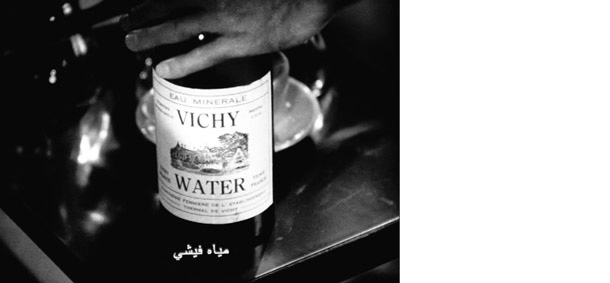
2014, pigment print on baryta, 37 x 50 cm.
Exhibition view from Constructing Illusion, Analix Forever, 2015, Geneva.
Courtesy of the artist and Analix Forever, Geneva.
Ed. of 5 + 2 A.P.
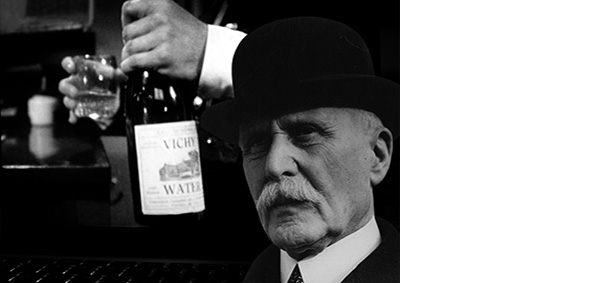
2014, pigment print on baryta, 37 x 50 cm.
Exhibition view from Constructing Illusion, Analix Forever, 2015, Geneva.
Courtesy of the artist and Analix Forever, Geneva.
Ed. of 5 + 2 A.P.
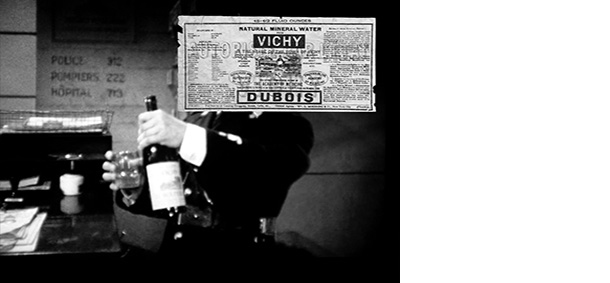
2014, pigment print on baryta, 37 x 50 cm.
Exhibition view from Constructing Illusion, Analix Forever, 2015, Geneva.
Courtesy of the artist and Analix Forever, Geneva.
Ed. of 5 + 2 A.P.
'' In « Vichy Water », mounir fatmi wonders about a transformation: that of a common household product,
sold or distributed every year by the millions and therefore banal, into an active ideological symbol. ''
Studio Fatmi, March 2017
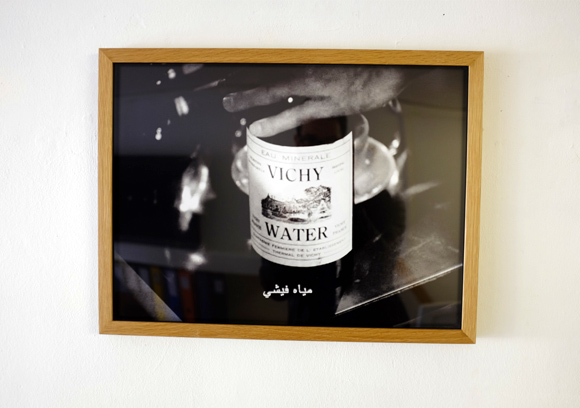
Vichy Water
Exhibition view from Constructing Illusion, Analix Forever, 2015, Geneva.
Courtesy of the artist.
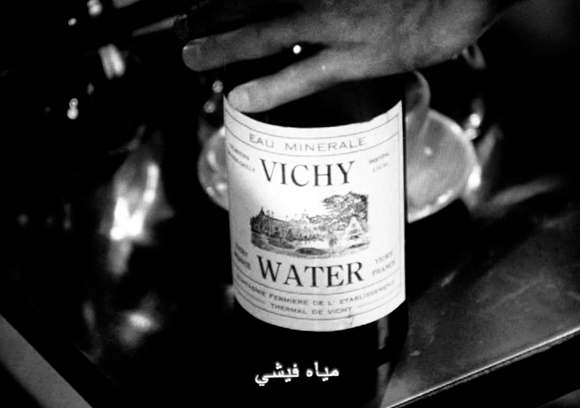
Vichy Water
Exhibition view from Constructing Illusion, Analix Forever, 2015, Geneva.
Courtesy of the artist.
|
|
|
|
|
|
Les photographies regroupées sous le titre « Vichy Water » participent à un work in progress initié en 2014, à partir du film « Casablanca » de Michael Curtiz, réalisé en 1942, qui a pour acteurs principaux Humphrey Bogart et Ingrid Bergman. Le film constitue une source d'inspiration importante pour mounir fatmi, à l'origine de plusieurs œuvres, telles que les séries de photomontages « Casablanca circles » ou « Les Affaires des sphères » (2012).
L'action du film se déroule dans un cadre mi-réel mi-fictif, dans la mesure où le film a été entièrement tourné en studio. Les décors s'inspirent ainsi de Casablanca, ville où mounir fatmi a passé son enfance et grandi et le film, devenu véritable référence cinématographique de nos jours, aborde des thèmes qui sont chers à l'artiste et qu'on retrouve traités dans ses œuvres : le totalitarisme, l'exil, les rencontres et les séparations. Le film « Casablanca » met en scène une histoire d'amour impossible dans le contexte de la seconde guerre mondiale et narre les aventures d'un couple qui tente de quitter l'Europe et de fuir le nazisme en débarquant d'abord au Maroc dans le but d'obtenir les papiers nécessaires pour rejoindre les Etats-Unis.
L'œuvre photographique « Vichy Water » opère un arrêt sur image dans la version arabe du film qui fait apparaître un sous-titre au bas de l'écran. Elle fait une pause au moment où la main du capitaine Renault - chef de la police locale chargé de collaborer avec les nazis pour traquer les résistants et fugitifs - se saisit d'une bouteille d'eau de Vichy dans l'intention de la mettre à la poubelle. Cette mise au rebut est devenue une image symbolique et marquante dans l'histoire du cinéma, pour un film dont les aspects propagandistes engagés contre le totalitarisme nazi sont bien connus. Il se lit comme un geste qui équivaut à un refus de cautionner le régime collaborationniste de Vichy, dirigé par le maréchal Pétain entre 1940 et 1944 - gouvernement dont le siège était situé en « zone libre », partie du territoire français non occupée par les Allemands. La collaboration du régime de Vichy a pris plusieurs formes : coopération économique, arrestations de résistants et d'opposants politiques, rafles de juifs sur le territoire métropolitain.
Les photographies réalisées par mounir fatmi interrogent les liens entre idéologie et merchandising à partir de cette illustration particulière du placement de produit au cinéma. Ce questionnement est mené à travers d'autres œuvres, tels que le projet photographique « Burn baby burn », qui interroge le devenir d'un mouvement politique de résistance dans le contexte de la société de consommation, ou la performance « Glaçons d'eau bénite » qui explore les liens entre idéologie religieuse et objets du rite. Dans ces œuvres, comme dans « Vichy Water", mounir fatmi s'interroge sur une transformation, celle d'un produit de consommation courante, vendu ou distribué chaque année à des millions d'exemplaires, et donc a priori banal, en symbole actif d'une idéologie. Avec « Vichy Water », il observe ainsi la transformation d'une simple bouteille d'eau en symbole de la collaboration et du totalitarisme - opération de transformation différente cependant par ses caractéristiques de celles qui ont lieu avec les substances qui apparaissent dans les autres œuvres précédemment citées. La transformation de la sauce piquante ou de l'eau bénite en symboles efficaces est en effet remise en question. Là où les pouvoirs supposément magiques de l'eau bénite, ou encore les pouvoirs soi-disant contestataires de la sauce piquante, semblent inopérants, la transformation de la bouteille d'eau en symbole politique apparaît comme une réussite, validée par le fait que bon nombre de spectateurs gardent en mémoire cette image du capitaine jetant la bouteille à la poubelle.
La série photographique « Vichy Water » affirme finalement sa propre conception de la résistance aux totalitarismes et son rapport aux injonctions de la société marchande contemporaine : la résistance s'affirme, non pas dans l'adaptation aux règles d'un système qu'on refuse, mais dans leur détournement et leur mise à distance.
Studio Fatmi, Mars 2017.
|
|
The photographs gathered under the title « Vichy Water » are part of a work in progress initiated in 2014 based on the 1942 movie by Michael Curtiz « Casablanca », starring Humphrey Bogart and Ingrid Bergman. The film is an important source of inspiration for mounir fatmi; it is at the root of several works, such as the series of photomontages « Casablanca Circles » and « Spherical Affairs » (2012).
The movie’s story takes place in a partly real, partly fictitious setting, as the film was entirely shot on a studio set. The movie sets are inspired by Casablanca, mounir fatmi’s hometown, and the movie, a classic in the history of cinema, touches upon issues that are dear to the artist’s heart and often found in his work: totalitarianism, exile, encounters and separations. The movie « Casablanca » tells the story of an impossible love in the context of World War II, and narrates the adventures of a couple trying to leave Europe and flee Nazism, arriving in Morocco first in order to obtain the necessary papers to reach the United States.
The photographic work « Vichy Water » freezes a frame in the Arab version of the movie, with subtitles appearing at the bottom of the screen. It pauses at the moment captain Renault, the local chief of police in charge of collaborating with the Nazis to capture members of the resistance and fugitives, seizes a bottle of Vichy water before he throws it in the garbage. This gesture has become a symbolic and striking image in the history of cinema, in a movie whose militant propaganda against Nazi totalitarianism is well known. It is perceived as a gesture that refuses to caution the collaborationist Vichy regime, established in the « Free Zone », the part of the French territory that wasn’t occupied by the Germans. The collaboration of the Vichy regime took on various forms: economic cooperation, arresting members of the resistance and political opponents, and roundups of Jews on the metropolitan territory.
The photographs created by mounir fatmi question the relations between ideology and merchandising through this particular example of product placement in a movie. This questioning is carried out through other works as well, such as the photographic project « Burn Baby Burn », which questions the evolution of a political resistance movement in the context of the consumer society, or the performance « Holy Water Ice Cubes » that explores the relations between religious ideology and objects of worship. In these works, as in « Vichy Water », mounir fatmi wonders about a transformation: that of a common household product, sold or distributed every year by the millions and therefore banal, into an active ideological symbol. With « Vichy Water », he observes the transformation of a simple bottle of water into a symbol of collaboration and totalitarianism – an operation of transformation that is therefore different than with the products appearing in the previously listed works. Indeed, he casts doubt on the transformation of spicy sauce or holy water into effective symbols. The supposedly magic properties of holy water or the so-called anti-establishment power of spicy sauce don’t appear to function, yet the transformation of the bottle of water into a political symbol comes across as successful, which is confirmed by the fact that many viewers are struck by that image of the captain throwing out the bottle.
Finally, the photographic series « Vichy Water » establishes its own conception of the resistance to totalitarianism and its relation to the injunctions of today’s market society: resistance asserts itself not by adapting to the rules of the rejected system, but by twisting them and distancing oneself from them.
Studio Fatmi, March 2017. |
|
|
|